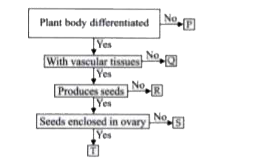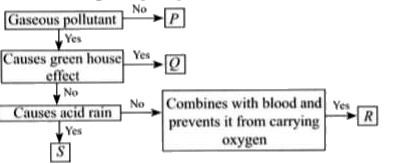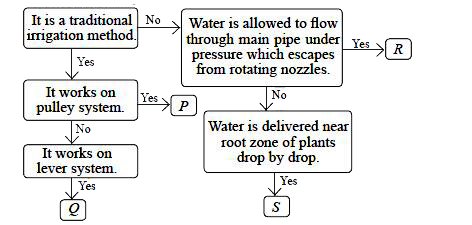Refer to the given table regarding different types of waste and identify P, Q, R and S.

A
PQRSVegetable peelUrine bagBlood sample State food
B
PQRSAluminium foil usedsyringeCotton swab Rajma beans
C
PQRSTea leavesTissue sampleUsed syringeAluminium foil
D
PQRSCooked pulsesOral pills Urine sampleStale food
Text Solution
The correct Answer is:C
Tea leaves are biodegradable, non-recyclable kitchen wastes. Tissue samples are biodegradable, non-recyclable hospital waste. Used syringes are non-biodegradable, non-recyclable hospital waste and aluminium foil is non-biodegradable, non recyclable kitchen waste.
|
Updated on:21/07/2023
Related Playlists
- BOOK - MTG IIT JEE FOUNDATIONCHAPTER - GARBAGE IN , GARBAGE OUT EXERCISE - Exercise (Subjective Questions) Long Answer Type4videos
GARBAGE IN , GARBAGE OUT
- BOOK - MTG IIT JEE FOUNDATIONCHAPTER - FOOD : WHERE DOES IT COME FROM?EXERCISE - OLYMPIAD/HOTS CORNER5videos
FOOD : WHERE DOES IT COME FROM?
- BOOK - MTG IIT JEE FOUNDATIONCHAPTER - GETTING TO KNOW PLANTS EXERCISE - OLYMPIAD/HOTS CORNER15videos
GETTING TO KNOW PLANTS
Knowledge Check
- Question 1 - Select One
Refer to the given figure and identify P,Q,R and S.
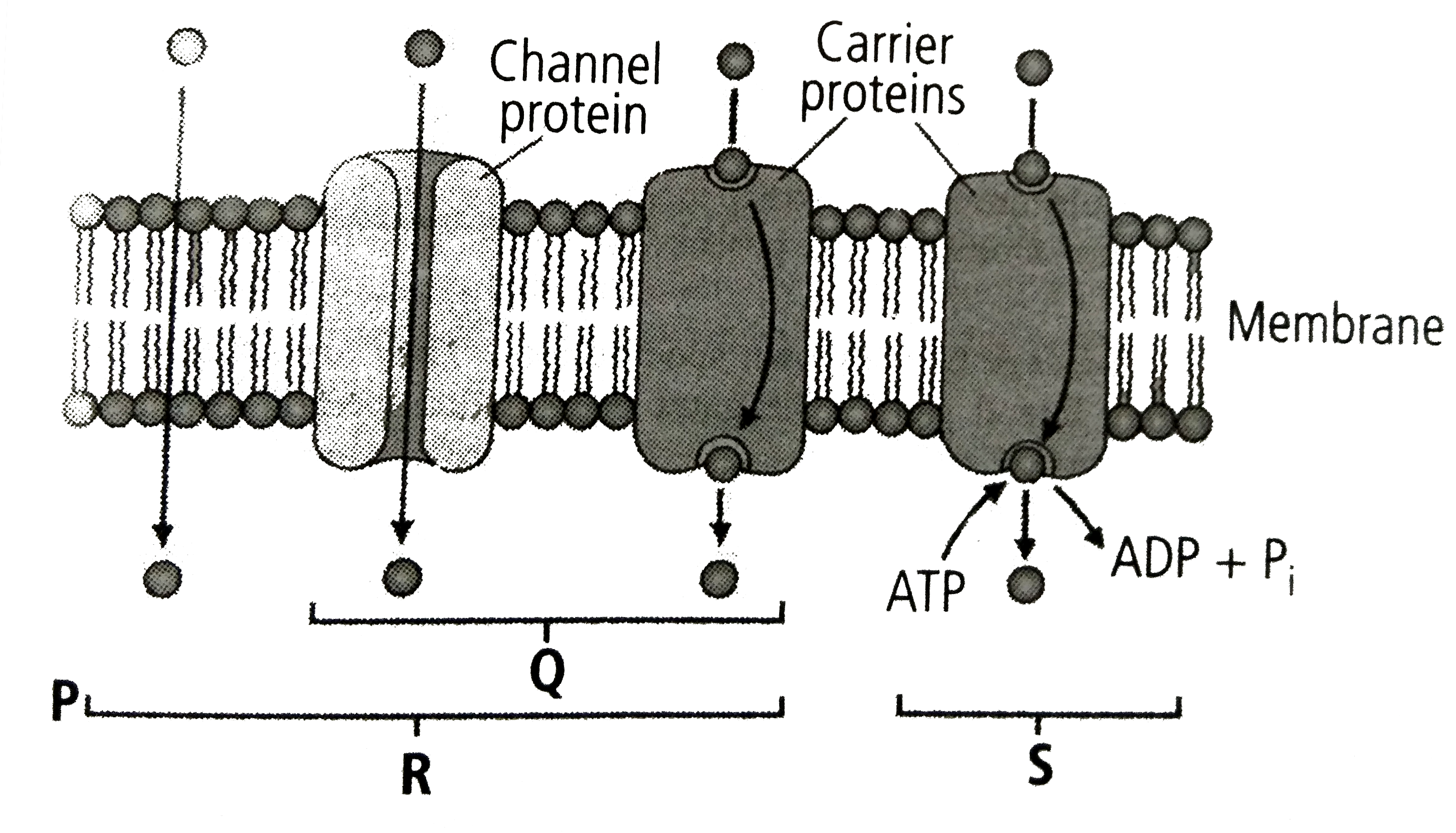 APQRSFacilitateddiffusionSimplediffusionActivetransportPassivetransportBPQRSSimplediffusionFacilitateddiffusionPassivetransportActivetransportCPQRSSimplediffusionFacilitateddiffusionActivetransportPassivetransportDPQRSFacilitateddiffusionSimplediffusionPassivetransportActivetransport
APQRSFacilitateddiffusionSimplediffusionActivetransportPassivetransportBPQRSSimplediffusionFacilitateddiffusionPassivetransportActivetransportCPQRSSimplediffusionFacilitateddiffusionActivetransportPassivetransportDPQRSFacilitateddiffusionSimplediffusionPassivetransportActivetransport - Question 1 - Select One
Refer to the given figure and identify P,Q,R and S.
 APQRSFacilitateddiffusionSimplediffusionActivetransportPassivetransportBPQRSSimplediffusionFacilitateddiffusionPassivetransportActivetransportCPQRSSimplediffusionFacilitateddiffusionActivetransportPassivetransportDPQRSFacilitateddiffusionSimplediffusionPassivetransportActivetransport
APQRSFacilitateddiffusionSimplediffusionActivetransportPassivetransportBPQRSSimplediffusionFacilitateddiffusionPassivetransportActivetransportCPQRSSimplediffusionFacilitateddiffusionActivetransportPassivetransportDPQRSFacilitateddiffusionSimplediffusionPassivetransportActivetransport - Question 1 - Select One
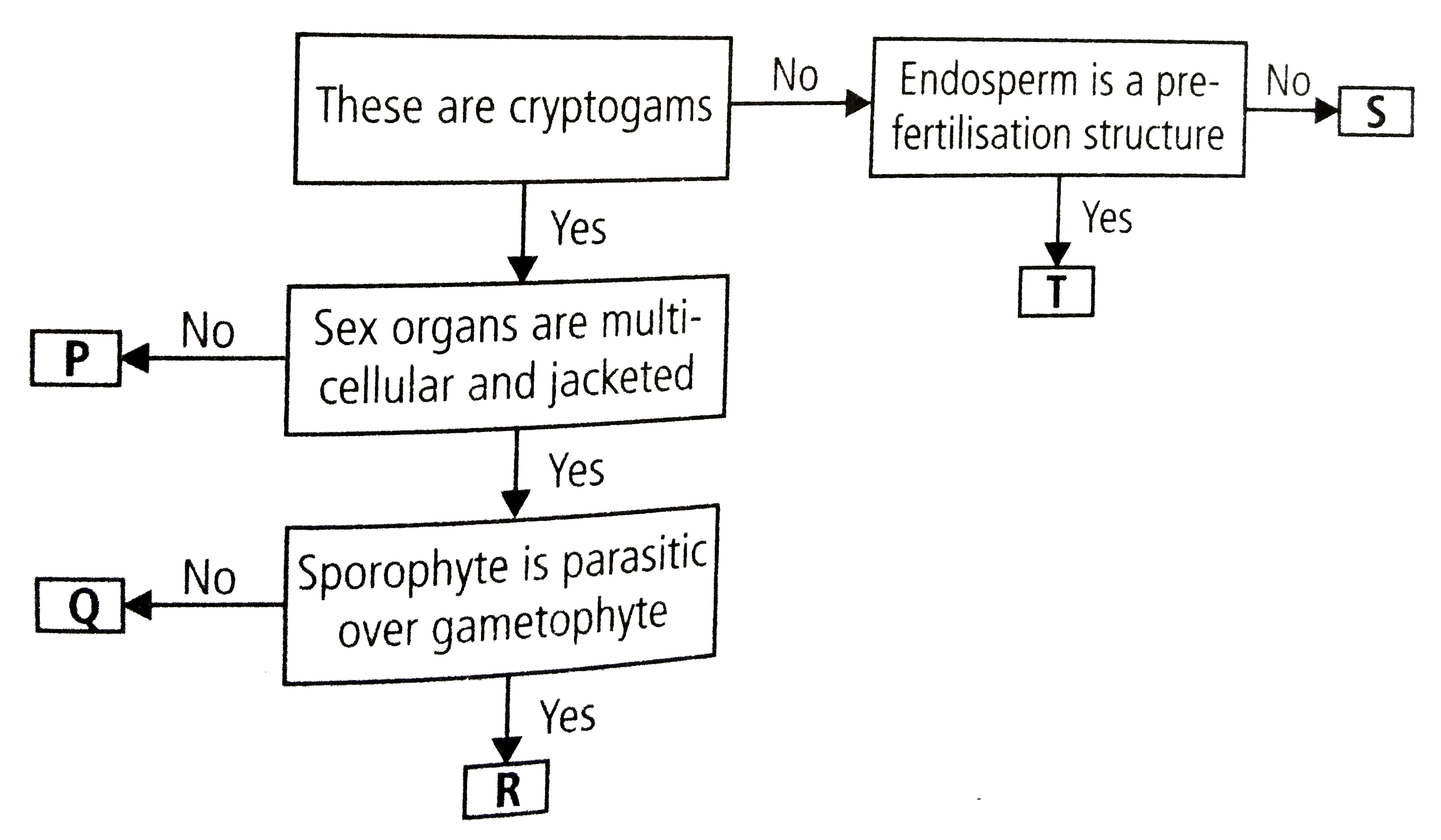
Refer to the given flow chart regarding different groups of kingdom plantae.
Which of the following is true regarding P,Q,R,S and T?AExamples of group 'P' include Riccia, Marchantia, Sphagnum, etc.BMembers of group 'R' can be both homosprous as well as heterosporous.CGroup 'Q' includes seedless vascular plants having sprophytic plant body.DGroup 'S' is more ancient that group 'T' and formed a dominant vegetation on earth some 200 million years back in mesozoic era. - Question 1 - Select One

Refer to the given flow chart regarding different groups of kingdom plantae.
Which of the following is true regarding P,Q,R,S and T?AExamples of group 'P' include Riccia, Marchantia, Sphagnum, etc.BMembers of group 'R' can be both homosprous as well as heterosporous.CGroup 'Q' includes seedless vascular plants having sprophytic plant body.DGroup 'S' is more ancient that group 'T' and formed a dominant vegetation on earth some 200 million years back in mesozoic era. - Question 1 - Select One
Refer to the given diagram and select the correct option for the joints P, Q, R and S.
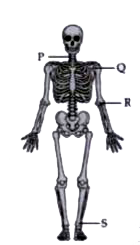 AJoint P allows movement in all directions.BJoint Q is also present in ankle.CJoint R is also present in knees.DJoint S allows only left and right movement.
AJoint P allows movement in all directions.BJoint Q is also present in ankle.CJoint R is also present in knees.DJoint S allows only left and right movement. - Question 1 - Select One
Refer to the given flow chart and select the correct option regarding P, Q, R and S.
 ADisease P is caused due to malfunctioning of exocrine glands while diseases Q, R and S are caused by pathogenic microbes.BS is a communicable disease while Q and R are non communicable diseases.CQ could be hepatitis B while R could be kala azar.DS could be sleeping sickness while R could be cholera.
ADisease P is caused due to malfunctioning of exocrine glands while diseases Q, R and S are caused by pathogenic microbes.BS is a communicable disease while Q and R are non communicable diseases.CQ could be hepatitis B while R could be kala azar.DS could be sleeping sickness while R could be cholera. - Question 1 - Select One
Refer to the given Venn diagram and select the correct statement regarding P, Q and R.
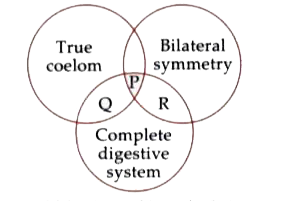 AR could be Enterobius which is parasitic in nature.BP could be Planaria which shows well marked regeneration power.CQ could be Ascaris that excretes through renette cells.DAll of these
AR could be Enterobius which is parasitic in nature.BP could be Planaria which shows well marked regeneration power.CQ could be Ascaris that excretes through renette cells.DAll of these


